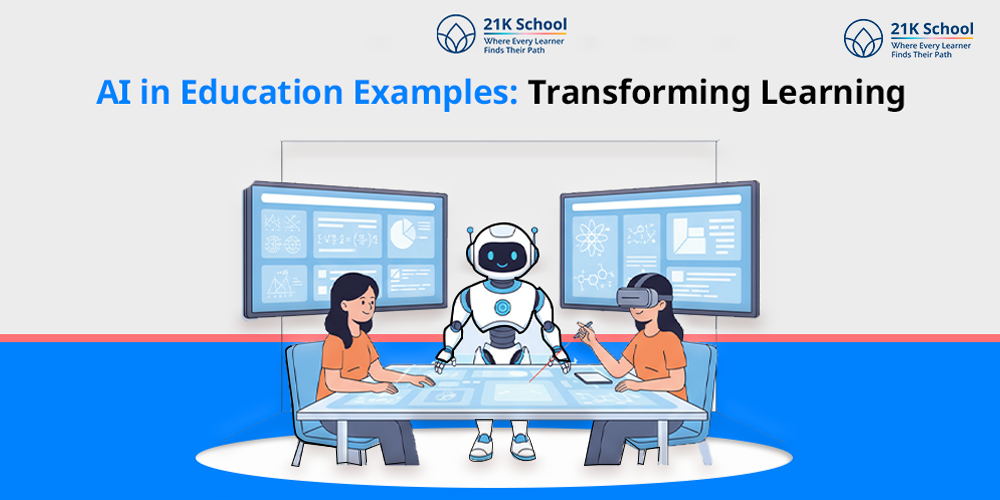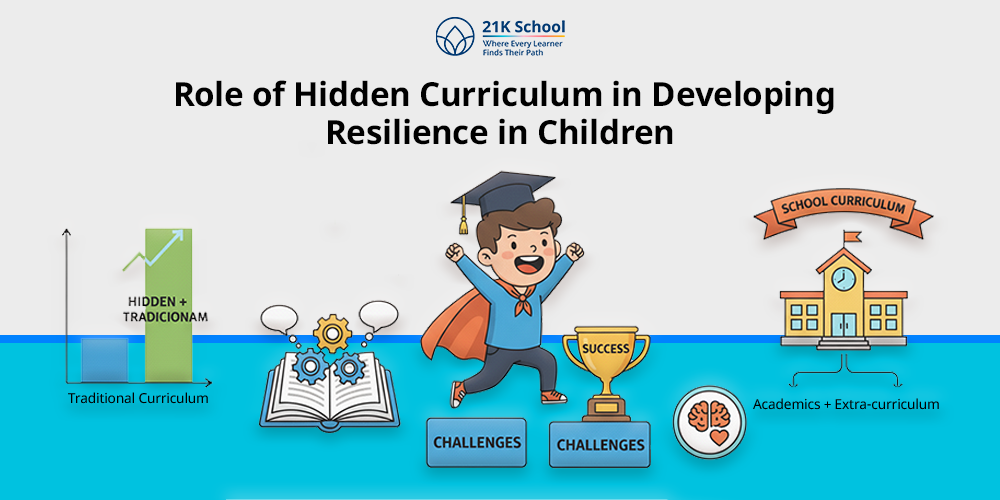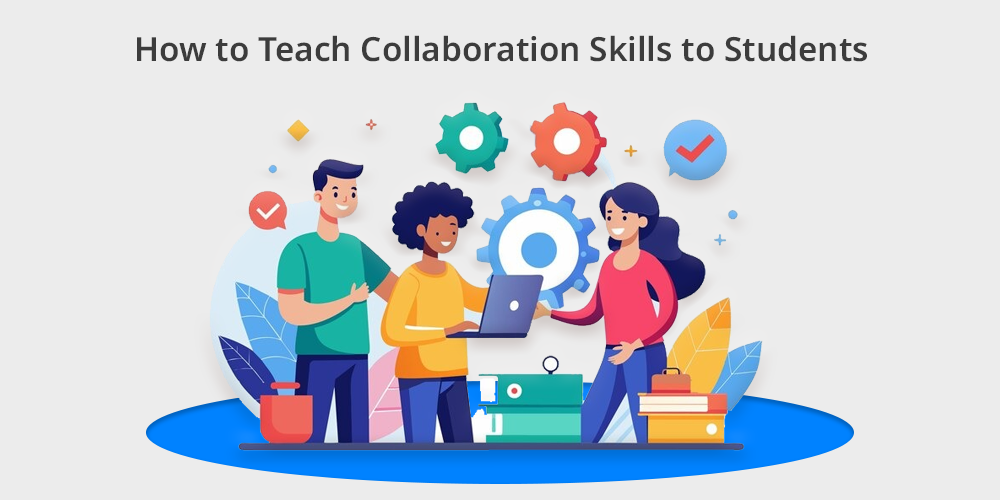
Have you ever wondered why collaborative skills are essential for students?
Collaboration skills are very important for students to effectively communicate with others. Collaboration skills promote teamwork and coordination with others.
Collaborative learning allows kids to share their knowledge, experiences and ideas, which helps them to effectively promote dynamic education.
Collaborative learning is also known as cooperative learning and was first introduced in the 1980s. Collaborative learning allows kids to work in groups and on projects as well.
Collaborative learning has grown in popularity as a result of technological advancements and the growing importance society places on teamwork. Schools and educational institutions can use effective strategies to implement collaboration skills in students.
Table of Contents
What are Collaborative Skills?
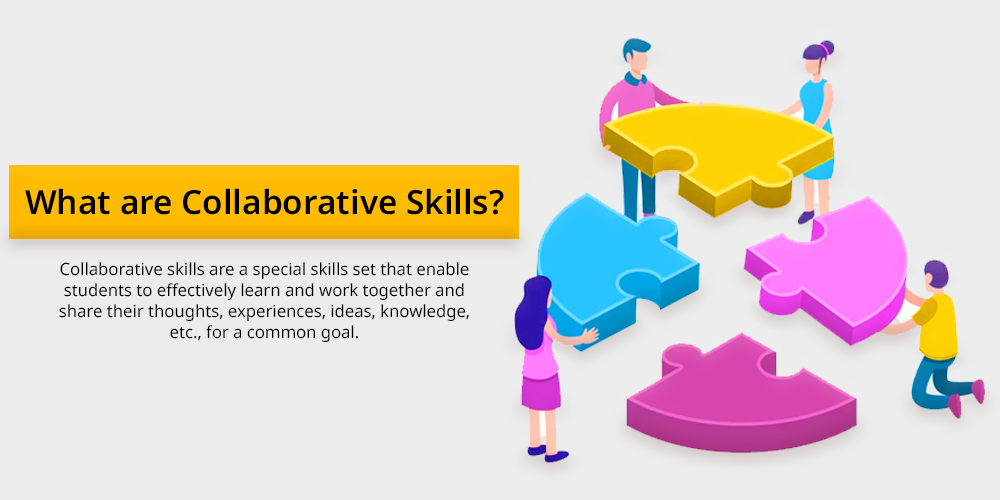
Collaborative skills are a special skills set that enable students to effectively learn and work together and share their thoughts, experiences, ideas, knowledge, etc., for a common goal.
Collaboration skills allow individuals to work effectively with others to finish a task or generate ideas.
When students cooperate with others, they work toward a shared objective, which helps them develop a sense of community. Collaboration skills help in enhancing creative thinking skills and cognitive development of children.
Collaborative skills can be taught to students through group projects, field work, group activities, community programs, and so on.
Top 12 Strategies to Teach Collaboration Skills to Students
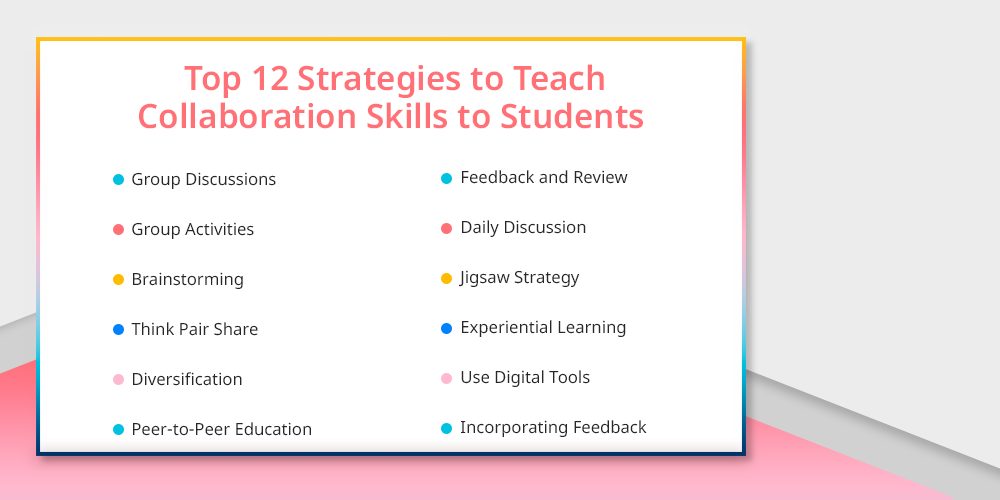
Collaboration skills are very essential for academics as well as future goals. Collaboration skills help in enhancing concentration level as well as helps in finding solutions for difficult problems.
There are various ways through which collaboration can be taught to students, even various fun activities allow students to develop collaboration skills.
Here are the ways through which collaboration skills can be taught to students.
1. Group Discussions
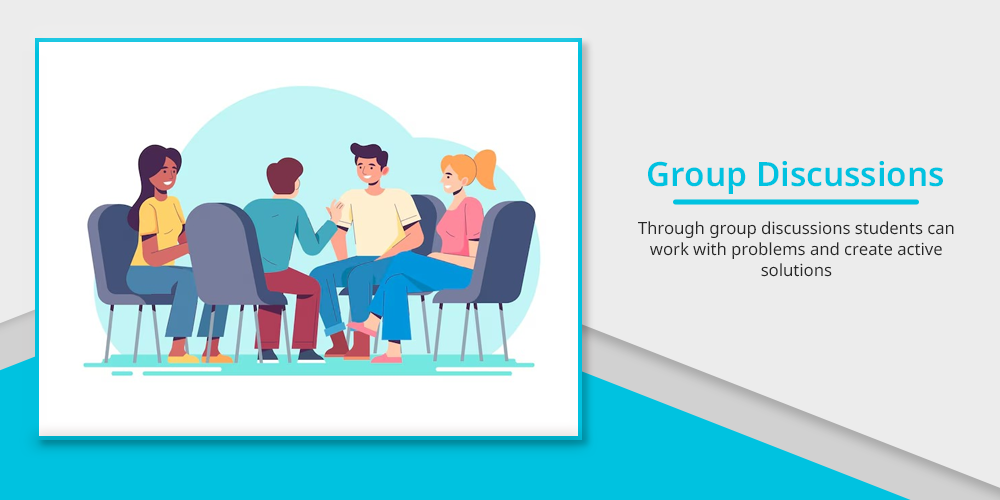
Group discussion is one of the effective ways to enhance collaboration skills among students. Teachers should conduct group discussions in classrooms which enables students to participate in group works.
Through group discussions students can work with problems and create active solutions without any hindrances and continue creating new strategies.
2. Group Activities
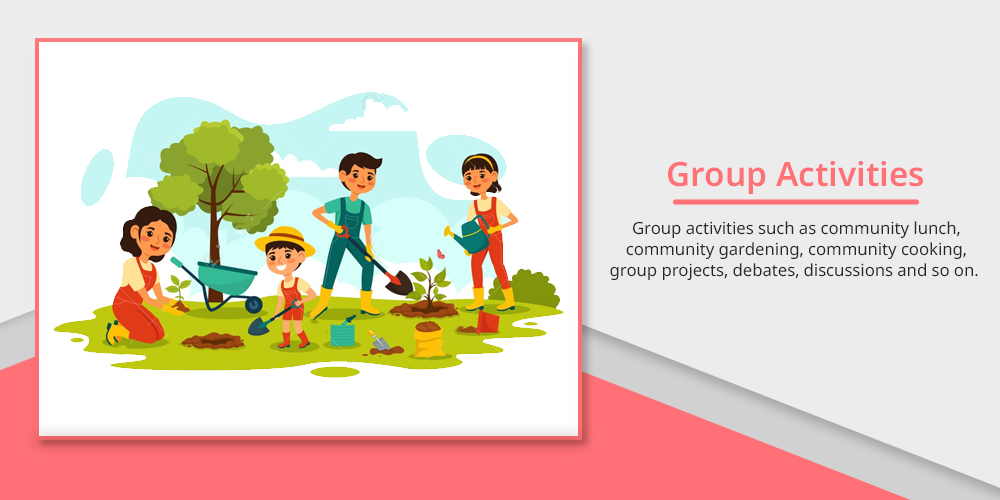
Schools can conduct group activities and sports to promote collaboration among students.
Group activities such as community lunch, community gardening, community cooking, group projects, debates, discussions and so on.
Participation of students in group activities, even in online group projects allows them to develop a sense of cooperation and unity, which allows them to develop positive relationships.
3. Brainstorming
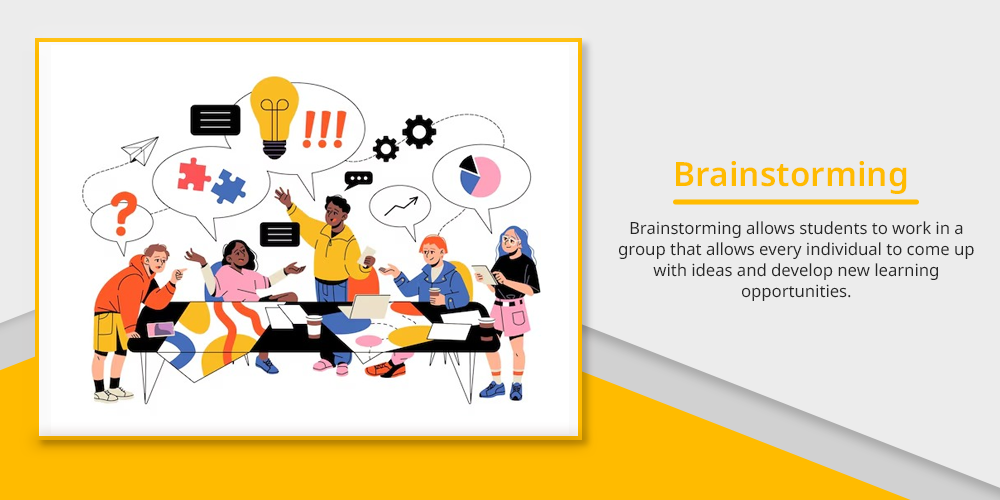
Brainstorming allows students to work in a group that allows every individual to come up with ideas and develop new learning opportunities.
Brainstorming includes group activities, event planning, and focus on the importance of mindfulness in the classroom and so on.
Brainstorming is an effective strategy that helps in building collaborative skills and allows kids to get quick and more detailed information on a particular topic.
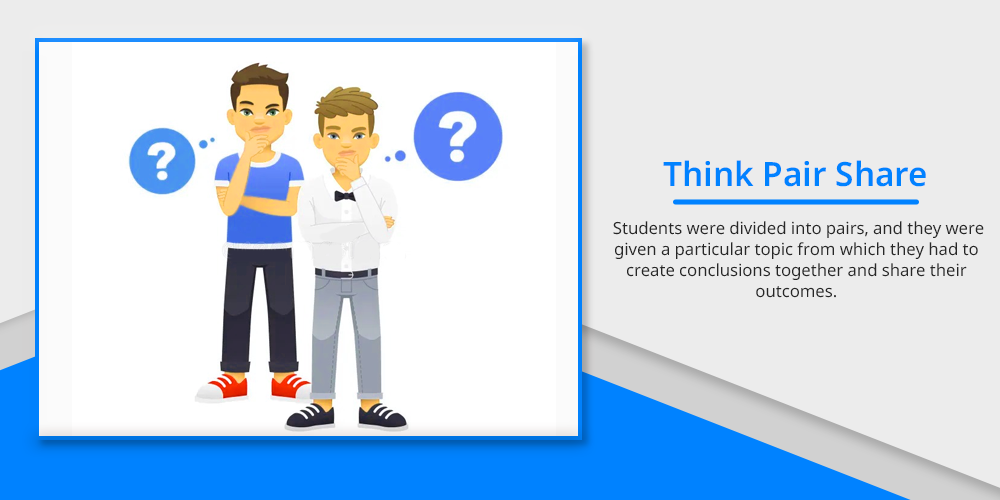
Think-pair-share is an incredible strategy that can be used to enhance collaborative skills in students.
In this method, students were divided into pairs, and they were given a particular topic from which they had to create conclusions together and share their outcomes.
This teaches students to work in a team and gives them intellectual freedom.
5. Diversification
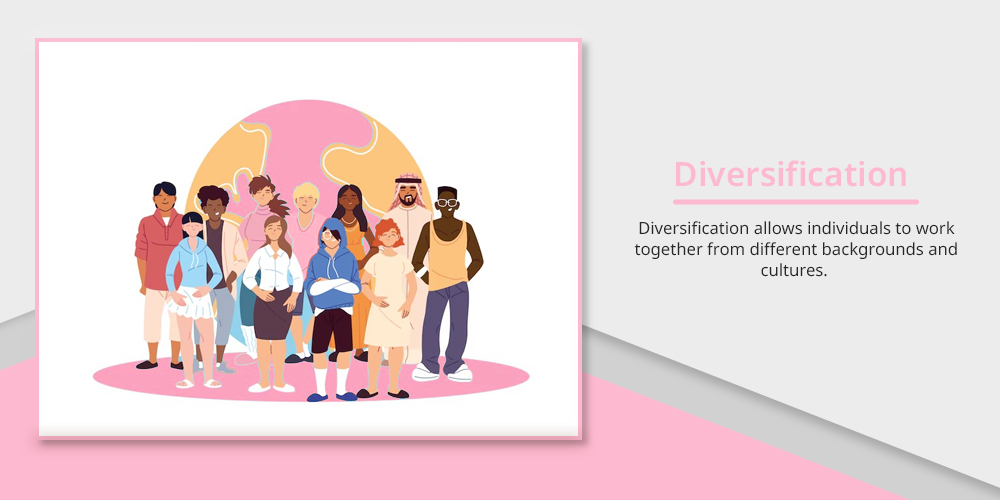
Diversification is an essential part of collaboration skills. Diversification allows individuals to work together from different backgrounds and cultures.
Diversification encourages students to promote an equal learning environment irrespective of any barriers and challenges. Diversification also helps in promoting inclusive education and cultural awareness.
6. Peer-to-Peer Education
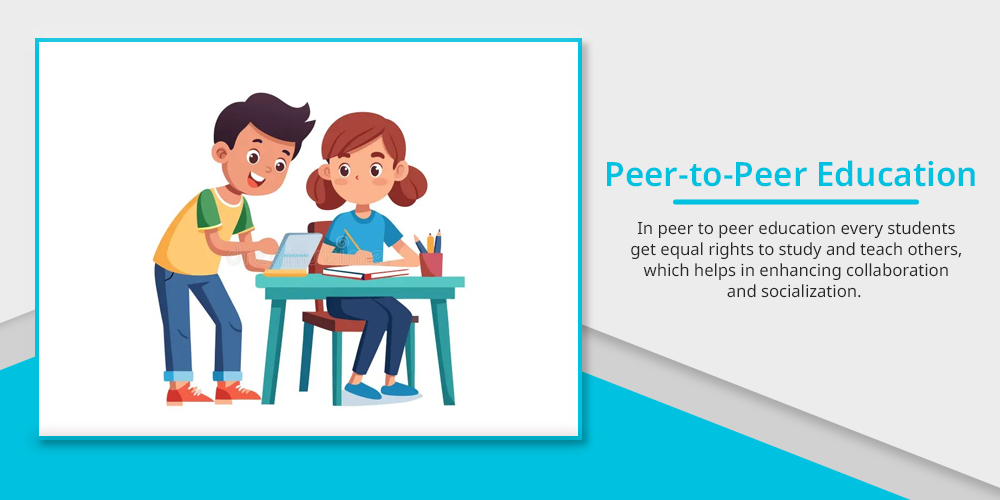
Peer to Peer education is an effective strategy to promote a collaborative learning environment.
In peer to peer education every students get equal rights to study and teach others, which helps in enhancing collaboration and socialization.
Schools should focus on implementing peer to peer education in order to boost their effectiveness and enhance holistic creativity.
7. Feedback and Review
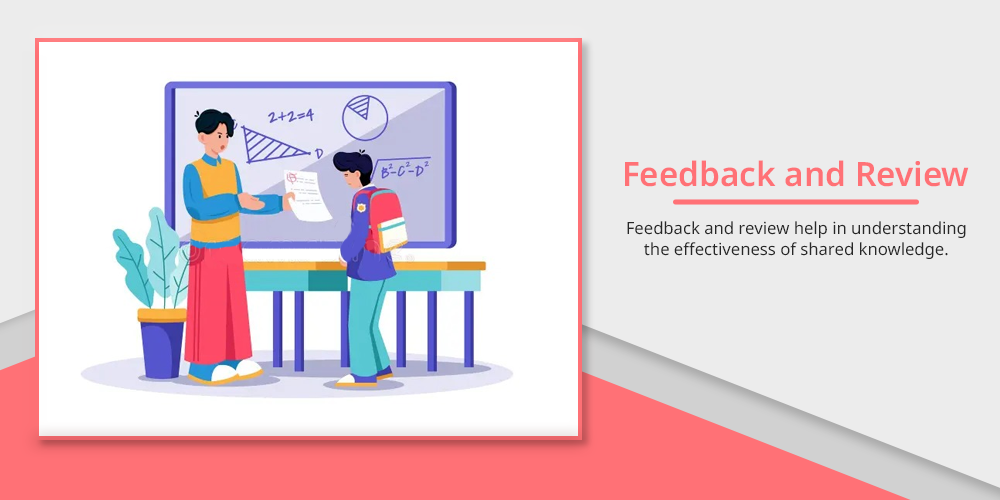
Feedback and review help in understanding the effectiveness of shared knowledge.
When students engage in collaborative learning, they share their thoughts and feedback, which helps them to develop a sense of cooperation and support from their peers and team members.
8. Daily Discussion
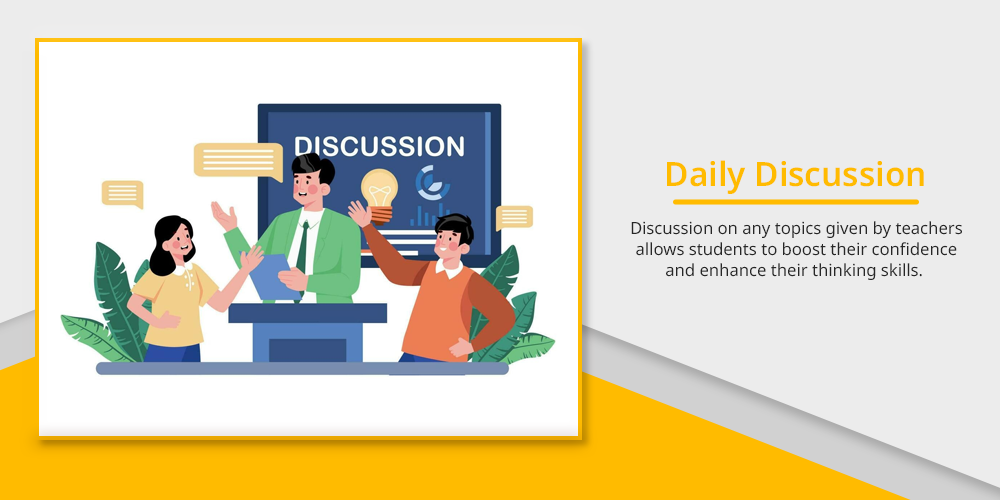
A routine discussion in schools helps students to enhance their communication as well as collaborative skills. Discussion on any topics given by teachers allows students to boost their confidence and enhance their thinking skills.
Which is essential for an effective collaborative learning environment and allows kids to communicate effectively with each other.
9. Jigsaw Strategy
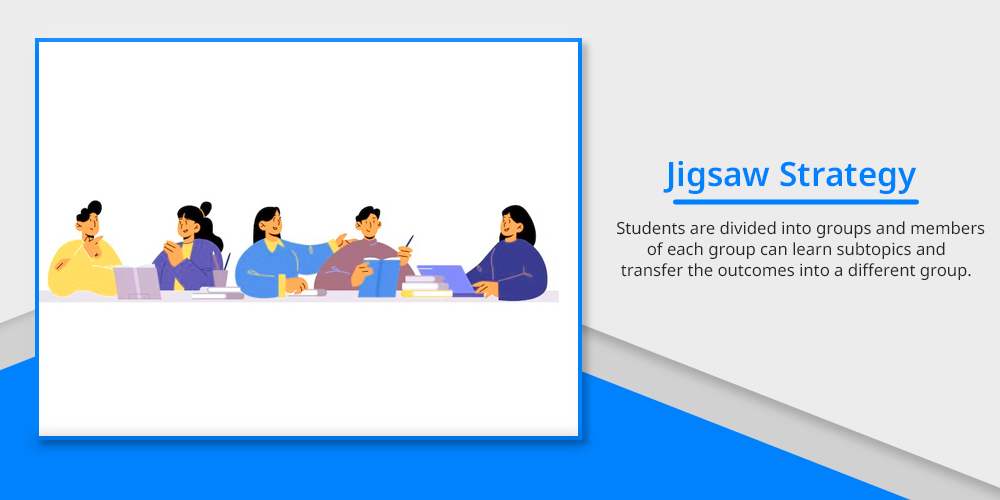
Jigsaw strategy is another collaborative skill in which students are divided into groups and members of each group can learn subtopics and transfer the outcomes into a different group.
This strategy helps in breaking difficult concepts into a simpler one, and allows every individual to understand the concepts more easily.
10. Experiential Learning
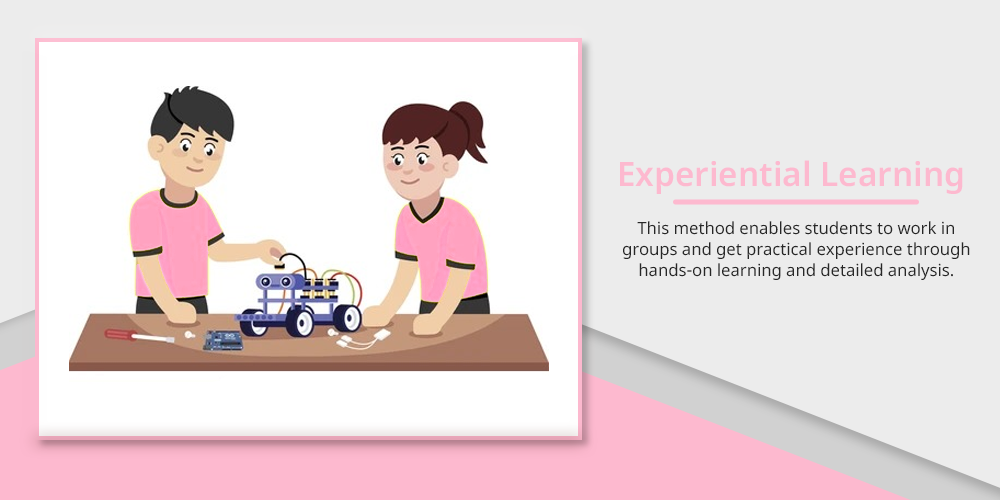
Experiential learning allows childrens to learn from practical exposure. This method enables students to work in groups and get practical experience through hands-on learning and detailed analysis.
Through this students can collaborate with each other and can make proper connections with others.
11. Use Digital Tools
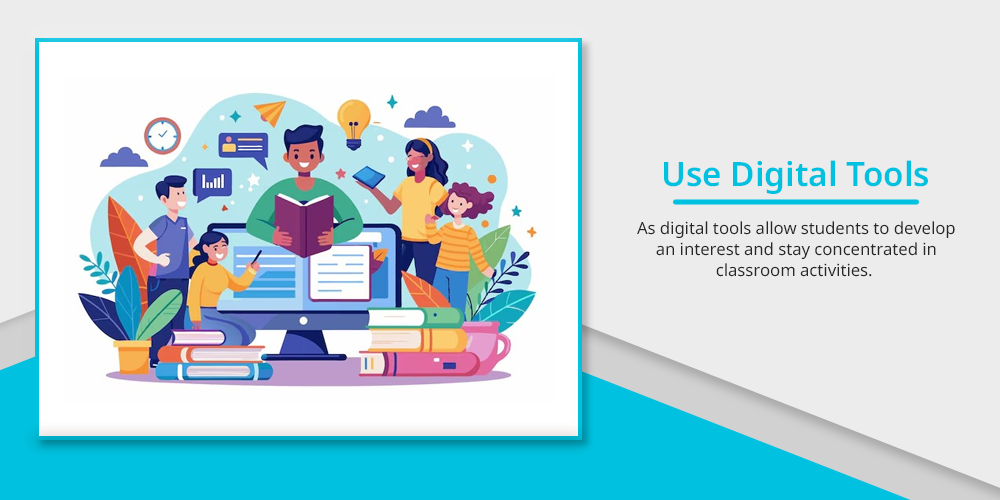
Using digital tools is an effective way to enhance students ‘ engagement in the learning process. As digital tools allow students to develop an interest and stay concentrated in classroom activities.
Digital tools such as Padlet, Mural, Kahoot, etc, allow students to share ideas, thoughts and knowledge through virtual learning platforms.
12. Incorporating Feedback
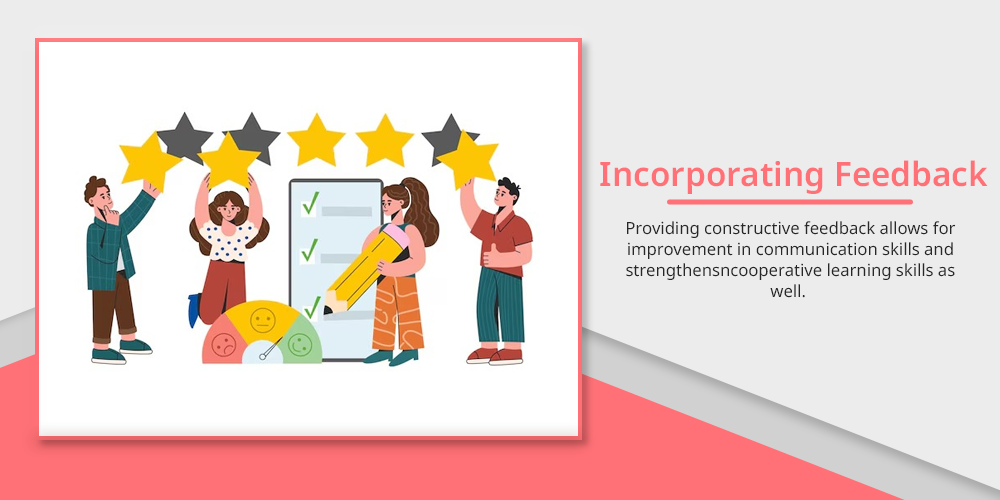
Feedback in collaborative learning is essential for understanding each other’s performances and developing mutual understanding of any context.
Providing constructive feedback allows for improvement in communication skills and strengthens cooperative learning skills as well. Students can unlock the use of the various formative assessment tools for gaining quick feedback.
Understanding Effective Collaboration Skills
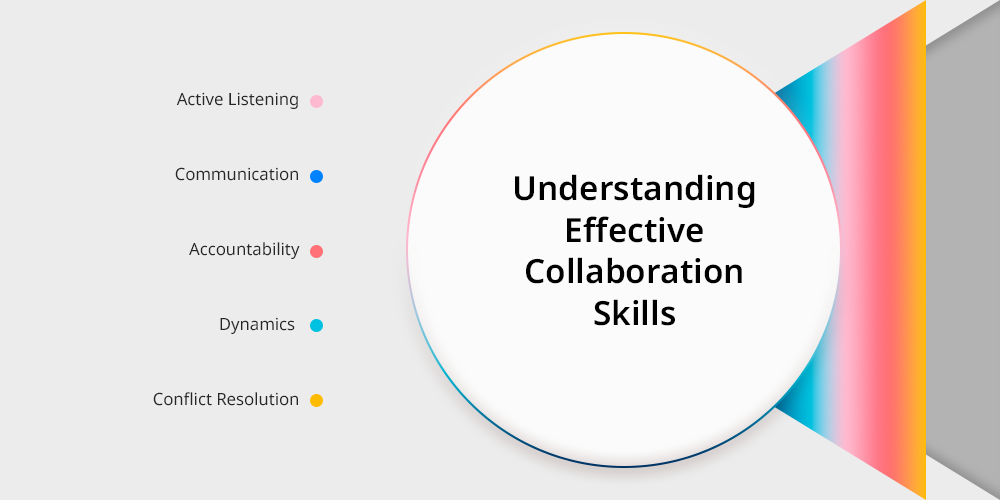
Collaboration skills are not only a single aspect, instead, it has multiple aspects which make collaboration skills more effective. For a positive learning environment, proper collaboration skills are essential, which include every important aspect.
Aspects such as communication, adaptability, active listening, feedback, etc., must be there. Here are the aspects of collaboration skills mentioned below.
1. Active Listening
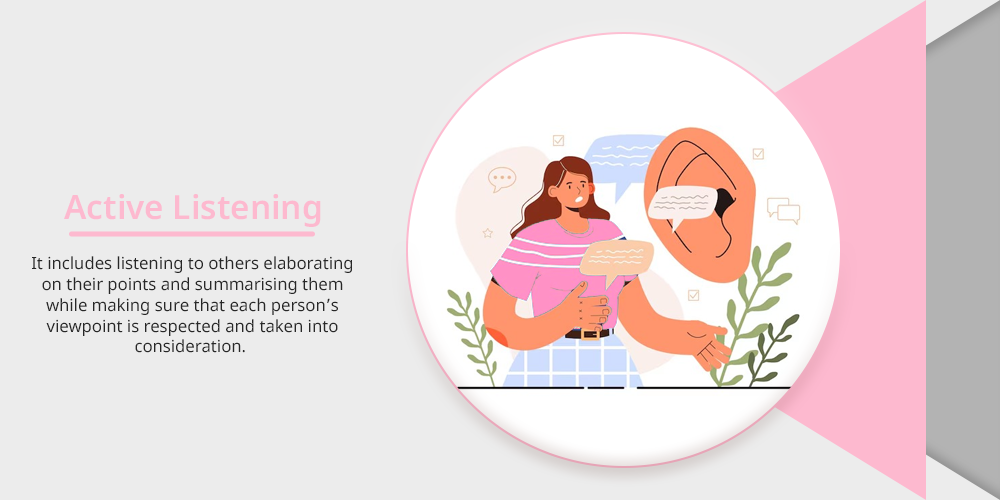
Collaboration skills are heavily reliant on active listening. It includes listening to others elaborating on their points and summarising them while making sure that each person’s viewpoint is respected and taken into consideration.
Through active listening, team members can better understand one another’s perspectives, address inconsistent communication and increase overall effectiveness.
2. Communication
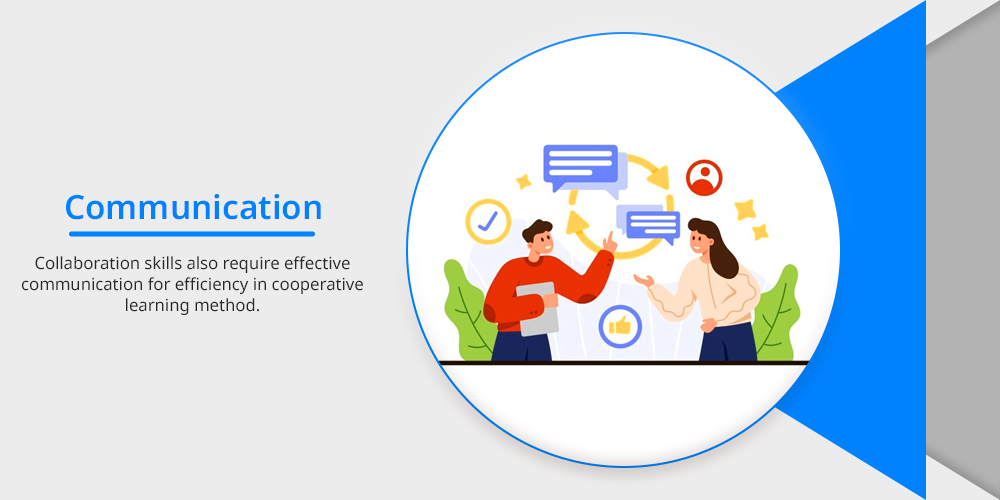
Collaboration skills also require effective communication for efficiency in cooperative learning method. Proper communication skills include verbal, nonverbal, and paraverbal components, which help in reflecting one another’s thought processes.
Importance of communication skills allows them to stay focused on their objectives and avoids misunderstandings.
3. Accountability
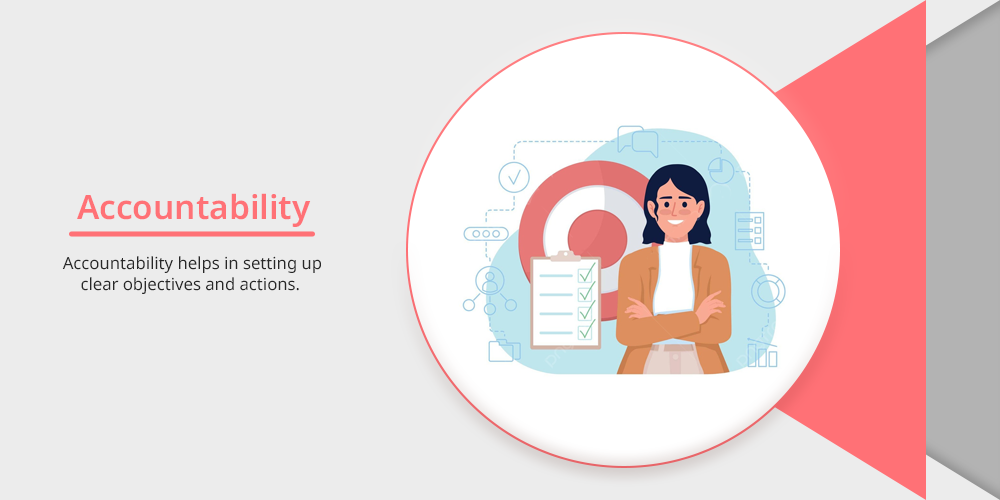
Accountability is another important factor for collaboration skills. Accountability helps in setting up clear objectives and actions.
Students can implement accountability by setting specific goals, providing helpful criticism and acknowledging. This helps members to work more effectively and efficiently without any technical jargon.
4. Dynamics
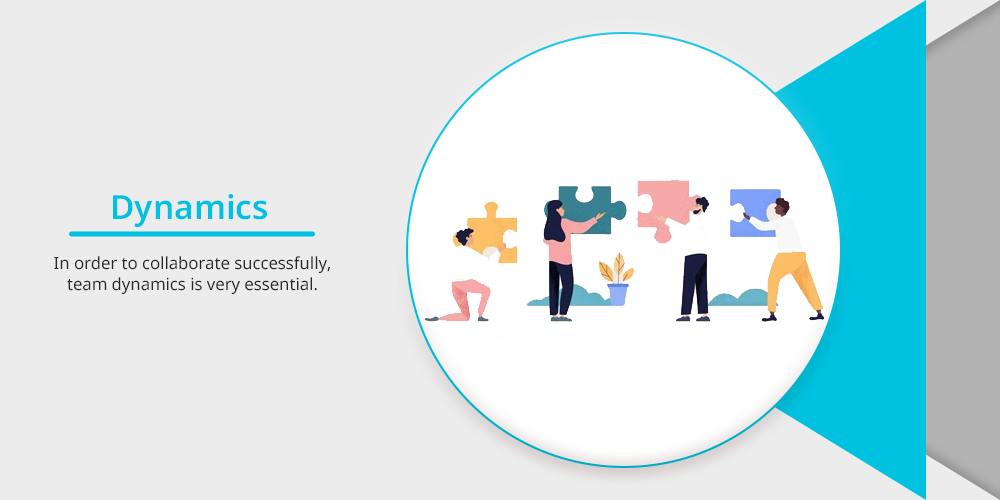
In order to collaborate successfully, team dynamics is very essential. Fostering a cooperative and positive learning environment involves embracing diversity, resolving conflicts and acknowledging accomplishments.
This allows students to work as partners and promotes self-directed learning.
5. Conflict Resolution
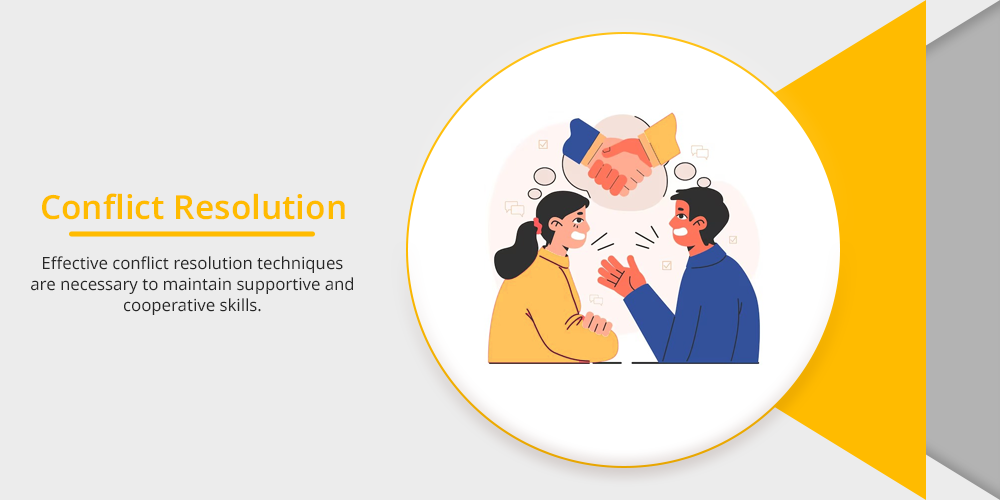
Effective conflict resolution techniques are necessary to maintain supportive and cooperative skills.
In any team environment, disagreements are unavoidable, but handling them constructively can keep everyone on the same page and focused on the objectives.
Benefits of Collaboration Skills
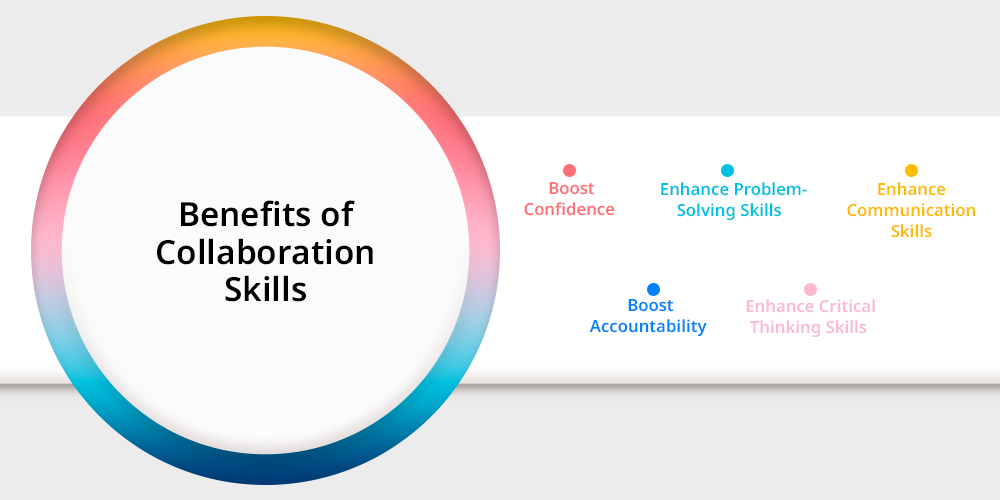
Collaboration skills allow individuals to effectively communicate with others. Collaborative learning allows students to enhance their cognitive skills and promotes effectiveness in terms of socialisation.
Through a fun in learning approach, collaboration skills make education an effective way for skill development. Below, you can check the benefits of collaborative learning.
1. Boost Confidence
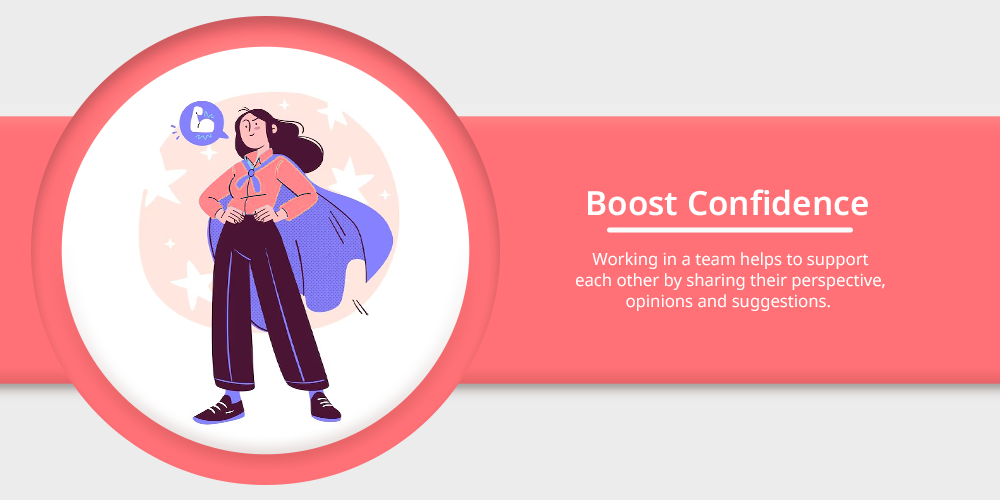
Collaborative skills allow students to develop confidence and attention. Working in a team helps to support each other by sharing their perspective, opinions and suggestions.
This allows individuals to understand each other’s needs and requirements for effectiveness. With teamwork, students and individuals help people develop confidence. Parents can also read more on how to build confidence in children.
2. Enhance Problem-Solving Skills

A collaborative environment requires a thought process, as every student shares their thoughts and concepts. Students in this process come across a range of possible solutions from people with different viewpoints and opinions.
This enables them to engage in a critical thinking process, which helps them to develop problem-solving skills.
3. Enhance Communication Skills
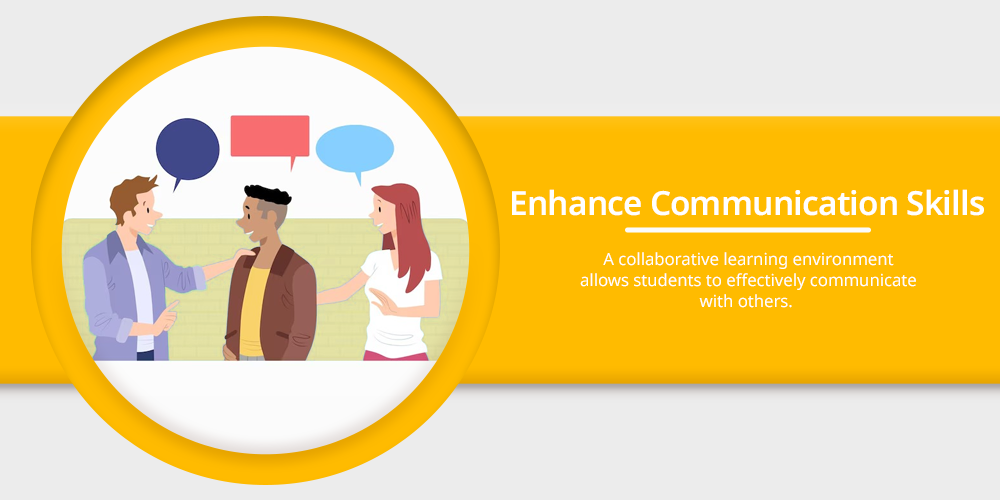
A collaborative learning environment allows students to effectively communicate with others. Collaboration includes verbal, nonverbal and paraverbal components of communication that allow individuals to share clear and concise information as well as receive equal feedback.
This helps students to enhance their communication skills and helps in achieving flow in education.
4. Boost Accountability
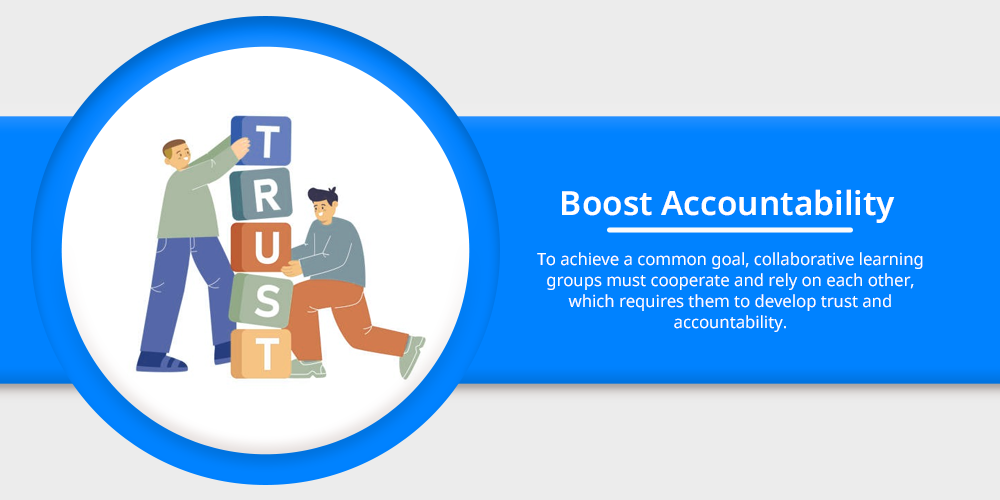
Trust is essential in collaboration skills, as every student has to work together on the same project, which requires trust.
To achieve a common goal, collaborative learning groups must cooperate and rely on each other, which requires them to develop trust and accountability.
5. Enhance Critical Thinking Skills
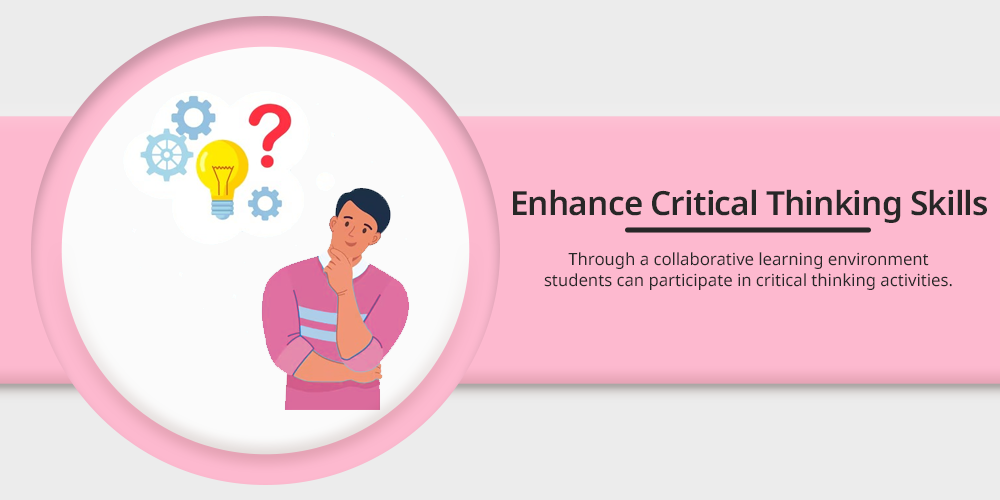
Through a collaborative learning environment students can participate in critical thinking activities. Which helps in enhancing kids critical thinking activities as well.
The benefits of cooperative learning allow individuals to think, analyse, and discuss concepts in an effective manner. Therefore, it helps students to improve critical thinking skills.
Conclusion
For students to succeed academically and in their future pursuits, collaboration skills are crucial.
Along with encouraging a sense of belonging and accountability among peers, these skills help develop effective communication, critical thinking and problem-solving skills.
Teachers can foster a collaborative environment by utilizing a variety of techniques, including brainstorming sessions, group discussions and experiential learning.
By learning to collaborate, students not only improve their own skills but also get ready for the collaborative nature of the modern education and workforce.
Developing collaboration skills ultimately gives students the means to succeed in their personal and professional lives.

